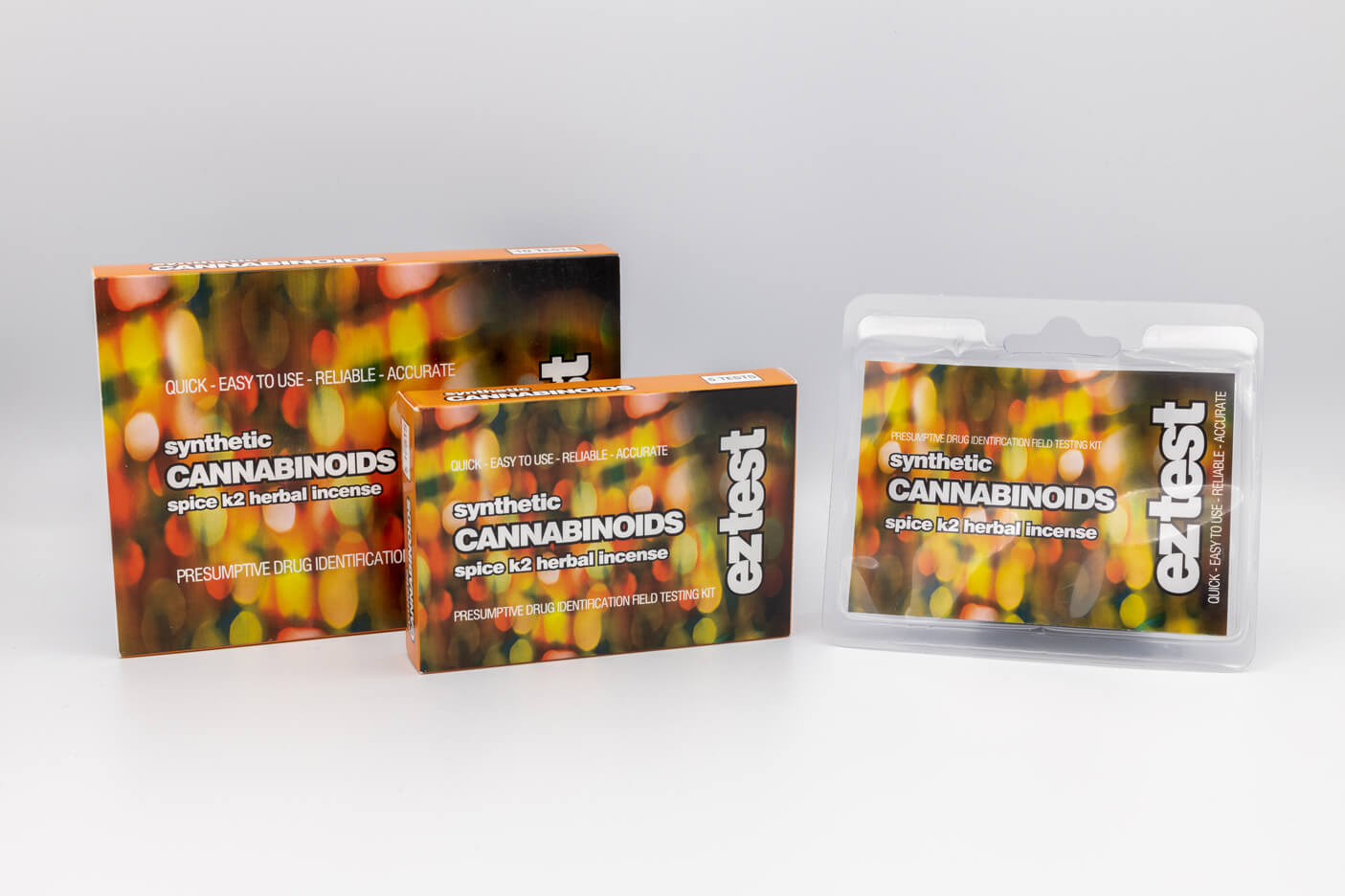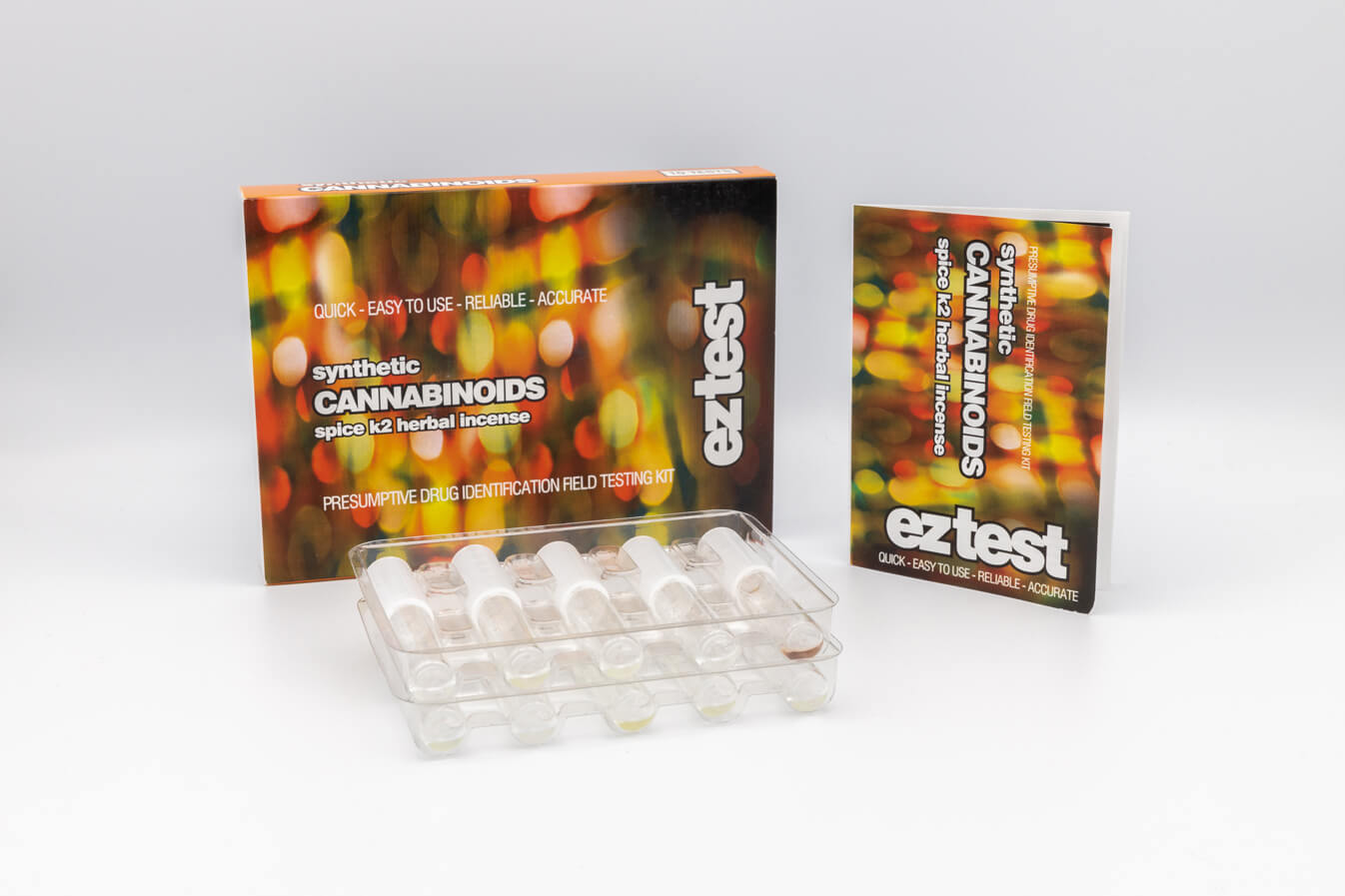EZ Test Kits
Synthetic Cannabinoids Drug Testing Kit
Synthetic Cannabinoids Drug Testing Kit
Couldn't load pickup availability
- Safe Shopping
- Discreet Shipping
- Secure Payments
 Detects Synthetic Cannabinoids: Identifies various synthetic cannabinoids, including popular substances like Spice, K2 and JWH compounds.
Detects Synthetic Cannabinoids: Identifies various synthetic cannabinoids, including popular substances like Spice, K2 and JWH compounds.
 Simple and Quick: Get results in a few minutes, with a clear color change indicating the presence of specific cannabinoids.
Simple and Quick: Get results in a few minutes, with a clear color change indicating the presence of specific cannabinoids.
 Testing at home: EZ Test Kits enable you to test substances in the comfort and safety of your own home.
Testing at home: EZ Test Kits enable you to test substances in the comfort and safety of your own home.
The Synthetic Cannabinoids Drug Testing Kit is a specialized addition to the EZ Test range, designed to detect a wide variety of synthetic cannabinoids (sometimes called Spice and K2), including compounds such as JWH-018, JWH-250, CP-55 and others. With this easy-to-use kit, users can quickly determine the presence of synthetic cannabinoids in a sample through a simple colour change reaction.
What Does the Synthetic Cannabinoids Test Detect?
What Does the Synthetic Cannabinoids Test Detect?
This kit is designed to detect a range of synthetic cannabinoids, including:
- Spice and K2 (brand/product names)
- JWH-250, JWH-200, JWH-018/073/081
- CP-55/940, CP-47/497
- AM-694
By comparing the colour change in the reagent to the provided chart, users can quickly identify if these substances are present in the sample.
Synthetic Cannabinoid Receptor Agonists (SCRA) are a type of Novel Psychoactive Substance which act on the CB1 receptor in the brain. SCRAs bind to the receptor more strongly than THC, leading to significantly stronger effects from very small doses. Due to the increased binding affinity SCRAs can lead to uncomfortable side effects including palpitations, intense paranoia, seizures and even death. If you are using, or planning to use, SCRAs the utmost caution is advised.
How It Works
How It Works
The Synthetic Cannabinoids Drug Testing Kit uses a chemical reagent absorbed in silica gel, which is held inside a glass ampoule. When a sample is added, the reagent reacts with the synthetic cannabinoids, causing a colour change. This colour is then compared to the provided chart, giving a clear indication of what substances may be present in the sample.
It should be noted that due to the wide variety of synthetic cannabinoids we cannot guarantee that this test will work for all types of synthetic cannabinoids available.
Unfortunately we are not able to give details of the reagent used or the precise nature of the chemistry involved for this test.
Reagent Testing
Reagent Testing
What is Reagent Testing?
Reagents are chemicals (usually acids or bases) which react in a known way to the suspected contents of a sample. All reagents sold by EZ Tests are known to change colour according to the substance that they are testing for.
Reagent testing is the process of adding an unknown material to a chemical reagent to observe the reaction that follows. It is a form of forensic chemistry which aims to rule in and out certain chemicals or groups of chemicals with various reagents until the contents is known. Reagent testing does not guarantee the presence of any particular drug or the absence of any others.
Why is Reagent Testing Important?
Illicit drugs are made, sold and (often) consumed with no quality testing or indication of what they really contain. Unfortunately, this can result in bad experiences, anxiety and serious harm. Reagent tests offer a quick and easy way to get some idea of what you may be taking.
They are not perfect, and they do not replace professional laboratory testing services, but they can be vital and may save a life.
What are the Limitations of Reagent Testing?
Reagent testing cannot guarantee that a sample contains a certain drug, and it cannot guarantee that there is no other drug present. Despite testing, it is possible that a different chemical reacted similarly to the expected reaction, causing a false positive. It is also possible that there is a drug in your sample which does not react to the reagent in question, or the second reaction is obscured by the drug you expect to find, and therefore is not found in the tests. It is always a good idea to use three or more different tests on any sample, to reduce the risk of this happening.
If you are using a purity test then it is vital that you are testing a known quantity of the drug (and that this amount is the same as the amount specified in the instructions) or else the degree of colour change will not correspond to the purity of the sample.
Storage
Storage
The ampoule in which the reagents are supplied is made out of clear glass to allow reliable identification of colour changes. To ensure that the shelf life of your reagents is as long as possible, please store them in a cool, dark place such as your fridge or cool cupboard.
Safe Disposal
Safe Disposal
After testing, please ensure that the ampoule and any leftover sample are disposed of safely to prevent contamination or harm. Proper disposal helps protect yourself and others from potential exposure to harmful substances.
If the reagent comes into contact with your skin, you should wash the affected area with soap and lukewarm water for 10-15 minutes. If the reagent comes into contact with your eyes you should adhere to the same process with lukewarm water only.
Share
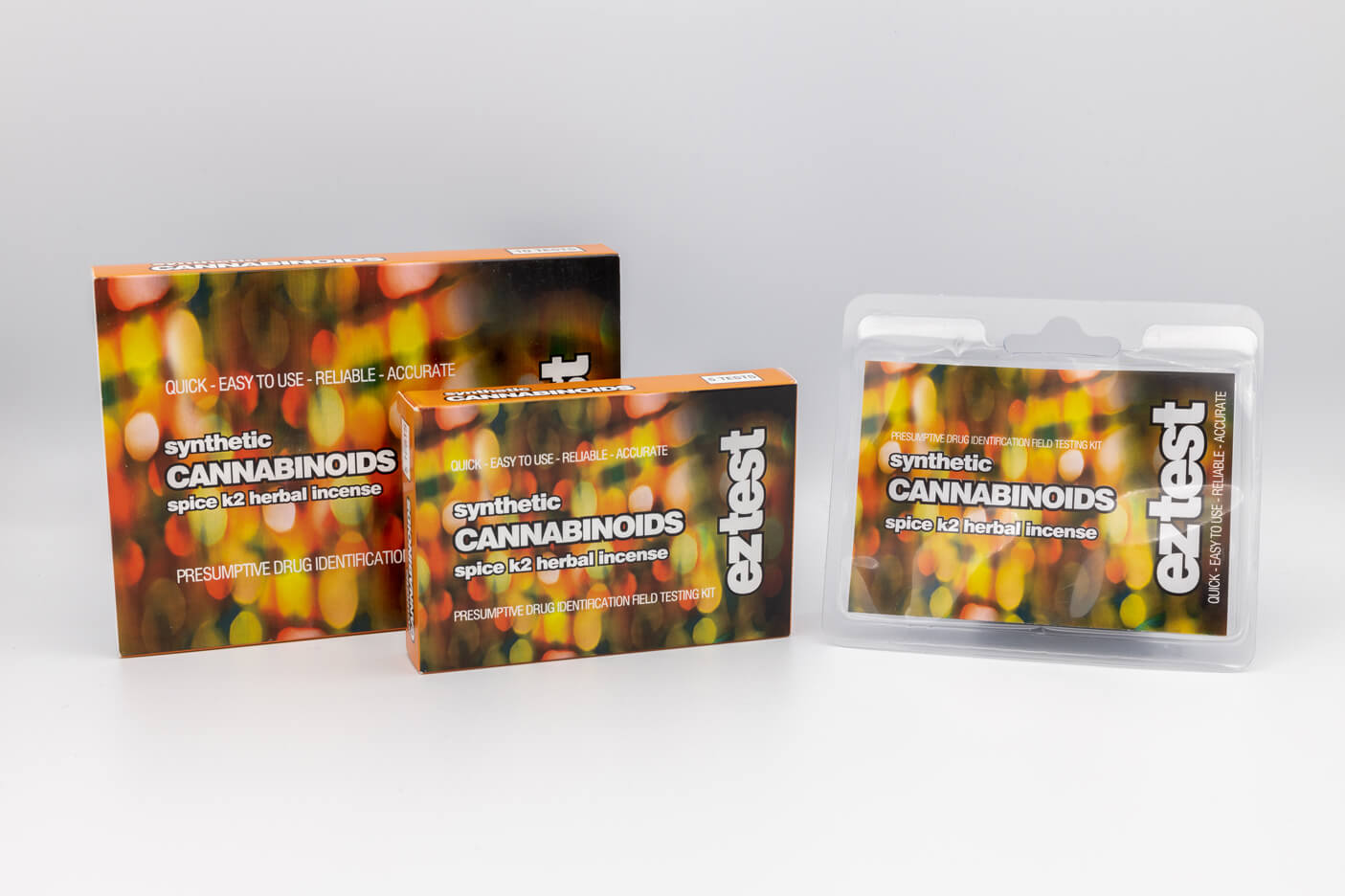
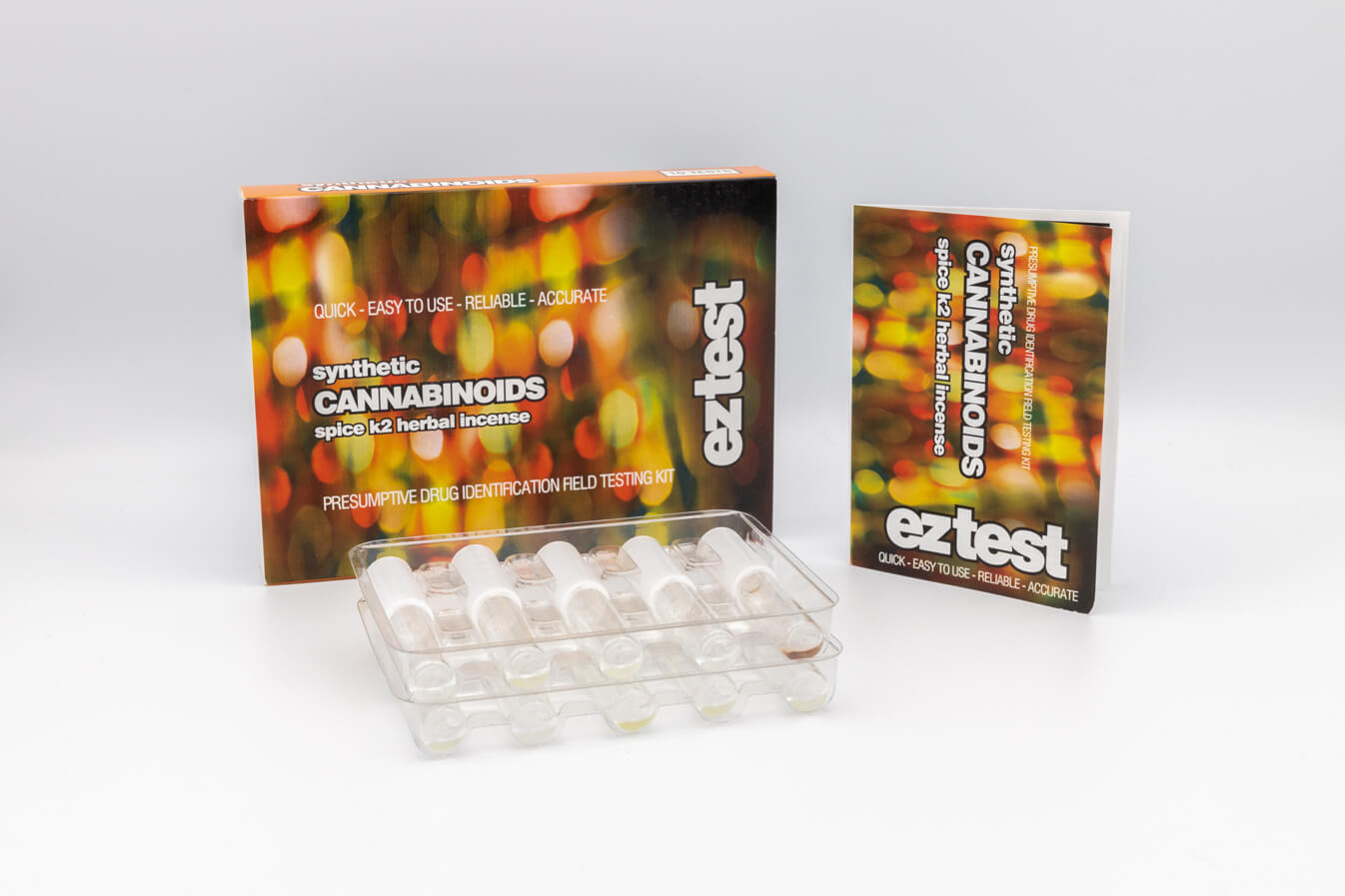
-
IMPORTANT WARNING!
- EZ Test Kits do not provide any information about how much of a substance has been detected, and accordingly do not indicate a safe amount of the drug to take.
- The positive result for presence of one drug does not mean the absence of other (potentially more dangerous) substances.
- There is potential for technical or procedural errors. Please follow the instructions carefully.
- Other factors and substances may cause false results (either false negative or false positive results for the drug you are expecting to find). These reagents are indicative only and do not provide definitive results.
- A negative result does not rule out the presence of any drug. It may be present in quantities lower than the limit of detection, leading to an apparent negative result.
- If you are unclear of your results and would like a full analysis of the substance you have please see our article on laboratory testing.
- A positive or negative test result is NOT an indication that the substance being examined is safe to use. No drug is completely safe even if it is pure. EZ Test does not condone the use of illicit drugs.
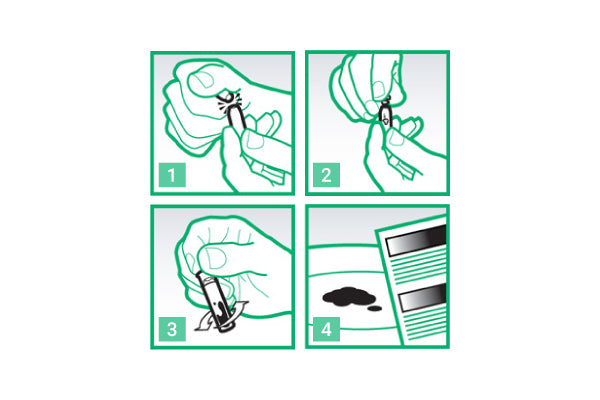
Instructions
- Crack Open the Ampoule: Carefully open the glass ampoule included in the kit.
- Insert the Sample: Add a small portion of the substance you wish to test. For reagent testing we recommend using only a few milligrams of your sample – for example a few shavings from a pill or a few crumbs of powder. For samples absorbed onto blotter paper we recommend cutting off about an eighth of the tab to test. For liquid samples a drop or two will suffice.
- Mix the Chemicals: Place the plastic lid on the ampoule and shake well to ensure the sample fully reacts with the reagent. Make sure that the lid is secure before shaking to prevent spillage of caustic reagents.
- Compare the Colour Change: Observe the colour change compare it with the provided colour chart to identify the substance. Always perform reagent testing in bright white light and always examine the colour change against a white background.
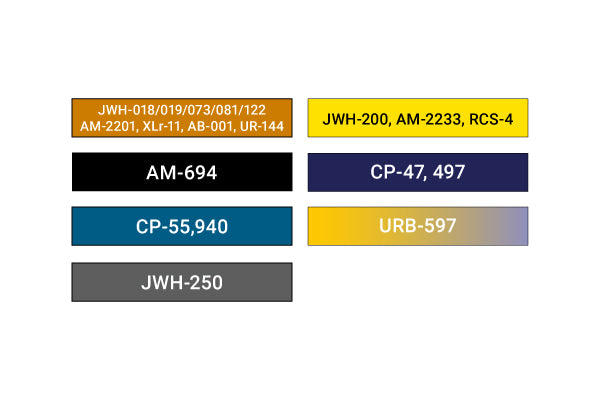
Interpreting the results
- Synthetic Cannabinoids (e.g., Spice, K2, JWH compounds): A distinct colour will develop, corresponding to the specific cannabinoids listed in the colour chart.
- No Significant Colour Change: If there is no colour change, the sample likely does not contain detectable synthetic cannabinoids.
Useful Links
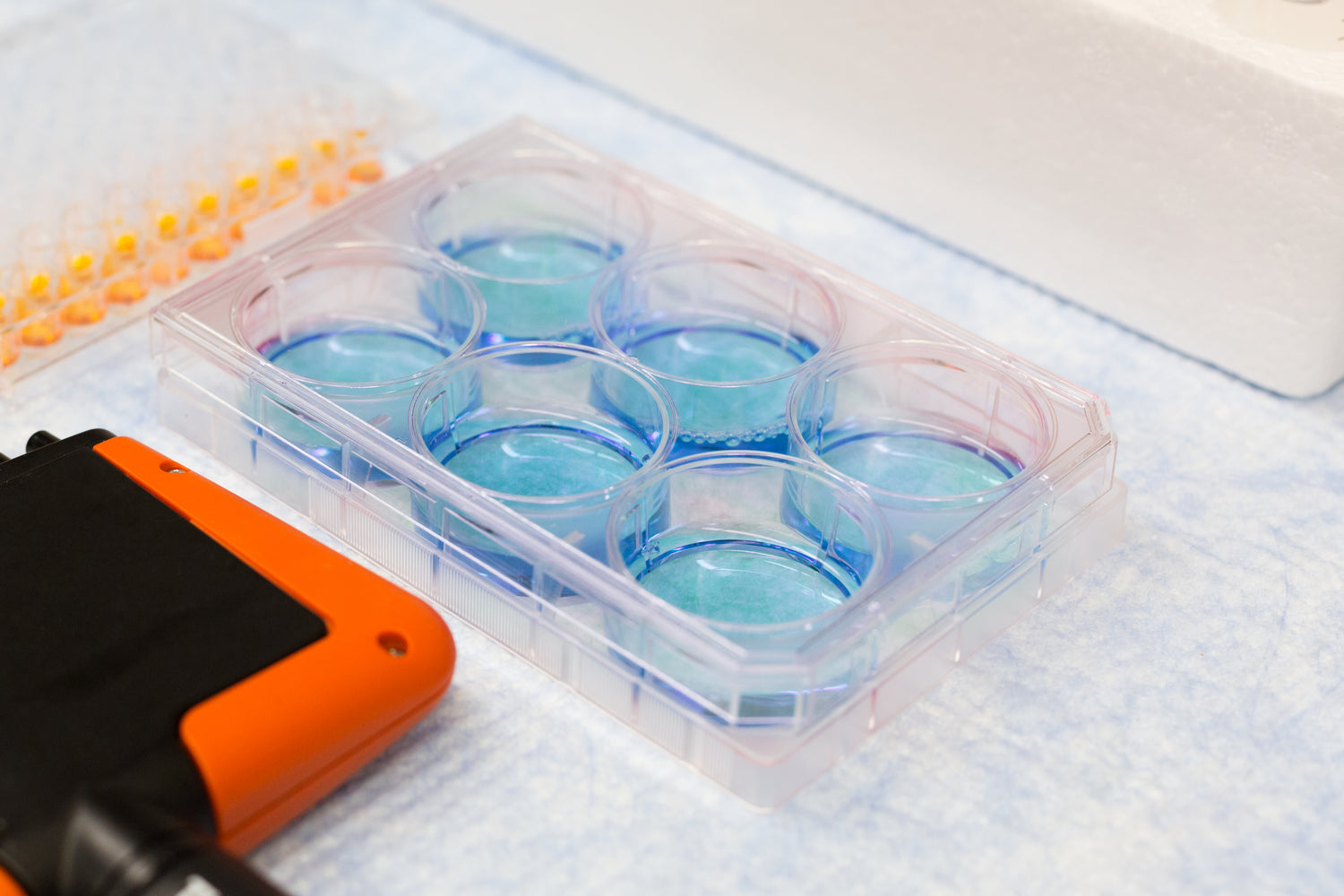
drug science reagent testing information
Any type of recreational drug use carries a degree of risk, both long-term and short-term. This is true for legal recreational...

detailed review of synthetic cannabinoids
Synthetic cannabinoids (SC) are a heterogeneous group of compounds developed to probe the endogenous cannabinoid system or as potential therapeutics...

